Did I just catch you yawning? If your energy levels are lagging, you’re in good company. Perhaps this is why there are 11,000+ Starbucks and 6,700+ Dunkin’ Donuts locations across the country!
Shoppers should know that caffeine isn’t their only option for helping them wake-up and focus. Many important natural means—be they supplementing or adjusting the diet—can help us feel more alert and ready to welcome the day.
States Lester Burks, CMO of Life Line Foods, LLC, Pikeville, TN, “Unfortunately, there is not a product that can do all of these things and simultaneously replace the benefit of careful nutrition through a whole food diet, rest and responsible exertion through exercise.”
Wanted: Oxygen for Energy Assistance
It is helpful to understand a little about how the body makes and stores energy before addressing how to help these processes. In Bursting with Energy, Frank Shallenberger, M.D., H.M.D., uses the “Oxygen Odyssey” as the descriptor for this five-step process (1). These steps are very much tied to one’s overall health and lifestyle. Everything from diet to lung disease to heart problems affect oxygen intake and processing, and thereby our energy level.
1. The lungs take in oxygen, which binds to hemoglobin in the blood.
2. Oxygenated blood is carried to the heart, which pumps it throughout the body. The better the heart functions, the more efficiently it can deliver oxygen.
3. The arteries carry oxygen from the heart to the tissues and cells. Flexible arteries help with circulation.
4. Next, the capillaries take over, where hemoglobin releases oxygen. Here, the enzyme 2,3 DPG facilitates this process; if not enough of the enzyme is present, oxygen isn’t released. Those who don’t exercise or who have high insulin levels tend to have lower 2,3 DPG levels.
5. Last, the mitochondria in cells produce energy (adenosine triphosphate or ATP) from oxygen and simple sugars. Decreased fitness, hormonal deficiencies, a poor diet, vitamin/mineral deficiencies, lacking carnitine, low coenzyme Q10 (CoQ10) levels and adrenal insufficiency all affect whether these cellular structures can perform optimally.
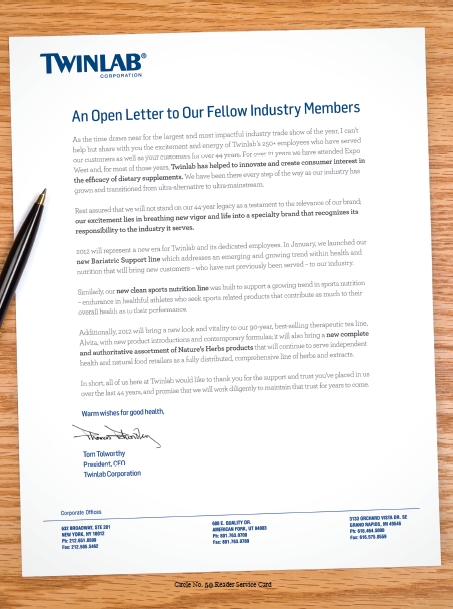 It is for this reason that Neil E. Levin, CCN, DANLA, nutrition education manager for NOW Foods, Bloomingdale, IL, says, “Having all of the right substances pre-distributed throughout the body, such as fats or creatine or CoQ10, allows efficient energy production—even in the far reaches of cells and muscles—on short notice and for sustained periods of time.”
It is for this reason that Neil E. Levin, CCN, DANLA, nutrition education manager for NOW Foods, Bloomingdale, IL, says, “Having all of the right substances pre-distributed throughout the body, such as fats or creatine or CoQ10, allows efficient energy production—even in the far reaches of cells and muscles—on short notice and for sustained periods of time.”
Ensuring the body has everything it needs for sufficient energy production is a combined matter of good health, a nutritious diet, regular exercise, avoiding too much stress, steering clear of certain environmental toxins and more. Since few of us are perfect in all these categories, energy-support products have an important role to play.
Levin breaks down some important jobs for nutrients that regularly appear in such products:
• ATP support like creatine and calcium pyruvate.
• Encouraging the burning of calories for fuel (such as l-carnitine, iodine and green tea).
• Promoting healthy sleep (including l-tryptophan, 5-HTP, and melatonin).
• Supporting energy production (several vitamins and minerals like B3 and B12).
He sums this up by saying, “Having a good mixture of natural substances available in our bodies to support healthy metabolism may be the most important factor in setting our energy levels.”
Levin’s list has a noticeable lack of stimulants, and there’s a good reason why.
Generating “true energy” versus creating the “sense of energy” are two entirely different matters, according to Chris D. Meletis, N.D., director of science and research for Trace Minerals Research, Ogden, UT. He bolsters Levin’s view of nutrition and energy by saying that making quality, sustained 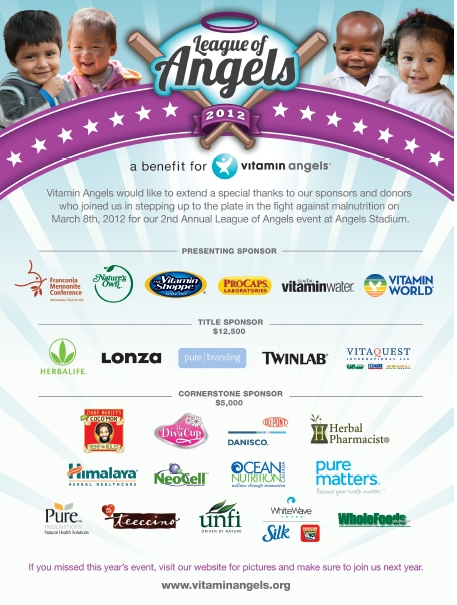 energy requires the “right amount of building blocks” to create ATP. Plus, “one still needs to have adequate blood sugar, certain hormones like DHEA, cortisol, pregnenolone, thyroid, growth hormone and sex hormones to ‘feel good and energized.’ So, holistically, true energy arises from a truly well-nourished and balanced body,” he believes.
energy requires the “right amount of building blocks” to create ATP. Plus, “one still needs to have adequate blood sugar, certain hormones like DHEA, cortisol, pregnenolone, thyroid, growth hormone and sex hormones to ‘feel good and energized.’ So, holistically, true energy arises from a truly well-nourished and balanced body,” he believes.
Let’s talk a little more about how some of these supplements work. When you think of energy support, you may immediately feel like talking about the B-vitamins. But, there’s a lot to remember.
For starters, B12 can offer somewhat of a boost, depending on the delivery form. It is vital for creating red blood cells for proper metabolism, which includes energy generation (2).
Matthew Supkoff, director of sales and marketing for Continental Vitamin Company, Los Angeles, CA, says B12 “works quickly and usually provides a rapid increase in energy,” but also states it is best absorbed sublingually or through injections.
Alan Jones, president of Nutrition Science Laboratories (The Nutrition Division for Lily of the Desert, Denton, TX) feels that using the B-vitamins in combination with certain amino acids supports mental focus and cognition. “This is different from how natural caffeine or caffeine analogs work, for instance, since they provide a quick high (and then low) in contrast,” he explains.
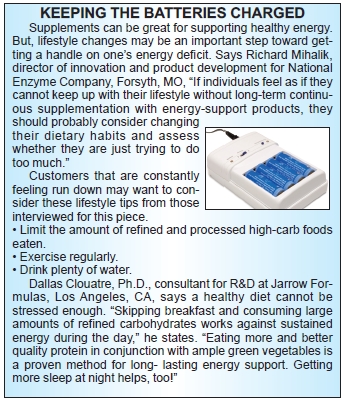 Other supplements support ATP production. Jolie Root, LPN, LNC, nutritionist/educator for Carlson Laboratories, Arlington Heights, IL, says, “Authentically increasing sustained energy is possible with ingredients that support or enhance the production of ATP. The mitochondria convert blood sugar and fat to energy in the form of ATP. Stimulating mitochondrial activity to support ATP production is one of the many roles of the B-complex vitamins. Other nutrients that contribute to this process are alpha lipoic acid, CoQ10 and carnitine.”
Other supplements support ATP production. Jolie Root, LPN, LNC, nutritionist/educator for Carlson Laboratories, Arlington Heights, IL, says, “Authentically increasing sustained energy is possible with ingredients that support or enhance the production of ATP. The mitochondria convert blood sugar and fat to energy in the form of ATP. Stimulating mitochondrial activity to support ATP production is one of the many roles of the B-complex vitamins. Other nutrients that contribute to this process are alpha lipoic acid, CoQ10 and carnitine.”
The latter three nutrients are three big players in the energy-support category. Alpha lipoic acid converts glucose into energy, so it is necessary for energy production. CoQ10 is needed in all tissues for converting oxygen to energy. It harvests more than 75% of ATP energy from food, and thus is critical for energy production (3). Carnitine has a different role. In the body, it converts to an enzyme (carnitine transferase) that brings fats into the mitochondria, where it is used to make energy.
Another important supplement is ribose, which is needed for cellular energy since it gives the “spark” required for ATP production and other cellular constituents (4). According to one ribose supplier, “Ribose is the starting point for the synthesis of these fundamental cellular compounds, and the availability of ribose determines the rate at which they can be made by our cells and tissues.”
Overall, Meletis believes a balanced energy supplement should provide the building blocks for ATP  production or “better innate energy metabolism at the Krebs Cycle (citric acid pathway).” The Krebs Cycle is a series of reactions in the body that causes certain molecules to oxidize and allow for the storage of energy in phosphate bonds (like ATP). This process, as stated previously, occurs in the mitochondria. Supporting the Krebs Cycle with the proper nutrients will help “legitimate energy to occur within the body,” he states.
production or “better innate energy metabolism at the Krebs Cycle (citric acid pathway).” The Krebs Cycle is a series of reactions in the body that causes certain molecules to oxidize and allow for the storage of energy in phosphate bonds (like ATP). This process, as stated previously, occurs in the mitochondria. Supporting the Krebs Cycle with the proper nutrients will help “legitimate energy to occur within the body,” he states.
ATP is only part of the story, Meletis says. Energy production also relies on proper nerve conduction since “there are electrical components to our bodies as well.” An adequate store of certain minerals for positive and negative charge formation is key on this front, Meletis points out, “as ions (cations Na+, K+, Ca+, Mg+, etc.) and anions (such as Cl-) are critical. It is all about keeping the body properly fueled.”
Dallas Clouatre, Ph.D., consultant for research and development at Jarrow Formulas, Los Angeles, CA refers to studies in which two to three grams of mixed potassium and magnesium aspartates were given daily to those experiencing low energy and general malaise. He states, “After one or two months of use, more than 80% of the test subjects reported greater and more sustained energy as opposed to approximately 30% of the placebo subjects.”
There are other ways to address energy support, too. Guinevere Lynn, MBA, director of business development for Sun Chlorella USA, Torrance, CA, believes energy-balancing can begin with chlorella supplements, since the high concentration of chlorophyll they contain “allows the body to naturally remove harmful toxins.”
 Another popular plant-derived energy-support supplement is maca, according to Brendan Brazier, a professional Ironman triathlete, author and formulator of the Vega vegan nutrition line from Burnaby, BC, Canada. This easy-to-digest whole food helps nourish and rejuvenate the adrenals, he says.
Another popular plant-derived energy-support supplement is maca, according to Brendan Brazier, a professional Ironman triathlete, author and formulator of the Vega vegan nutrition line from Burnaby, BC, Canada. This easy-to-digest whole food helps nourish and rejuvenate the adrenals, he says.
Adaptogenic herbs. The term “adaptogens” should be in your back pocket if you want to talk to customers about herbs for energy support. According to Dan Chapman, CEO of Redd Remedies, Bradley, IL, “Adaptogen herbs like Rhodiola rosea and Panax ginseng have been used traditionally daily throughout life and have been proven not only safe, but also very beneficial to sustained health and energy.”
Be sure you’re clear with shoppers: These herbs aren’t stimulants that will make you feel wired. Rather, Lynn explains that adaptogens (like Eleuthero), “naturally assist with not only one’s energy levels, but also our ability to physiologically deal with stress.” She adds that the term “adaptogen” is derived from “the root word ‘adapt,’ which means to change in a way that is beneficial to survival.”
This means that those who use adaptogens regularly cannot only expect energy support, but they may also feel better equipped to handle stress, too. In Adaptogens: Herbs for Strength, Stamina, and Stress Relief (5), herbalists David Winston and Steven Maimes say such herbs create a nonspecific response in the body whereby one is better able to resist stressors. They also are said to help normalize some physiologic changes caused by stressors. Regarding the latter, the authors use Asian ginseng as an example. They state that it “has demonstrated potential to induce bidirectionality along different metabolic pathways and create a normalizing effect.” It contains both ginsenoside Rg1 (which stimulates the nervous system) and Rb1 (which calms the nervous system).
Rob Maru, vice president of product innovation at Reserveage Organics, Gainesville, FL adds, “Stress robs us of energy and by naturally reducing stress we can energize the body in a healthful way.” His favorite adaptogenic herbs include Rhodiola rosea, shisandra and ashwagandha, which “help to provide long-lasting energy, stamina and mental focus.” These options, he believes, are better alternatives for those that are sensitive to caffeine.
In your store. The next time a bleary-eyed shopper comes calling for energy help, should you immediately steer them to the aforementioned supplements? Well, first, many interviewed for this piece believe you should help them get to the bottom of why they need the extra support.
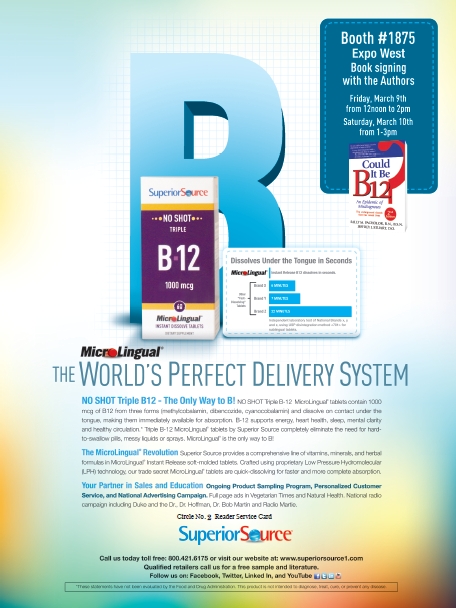 According to Steve Kravitz, president of Matrix Health Products and Earth’s Bounty, Vancouver, WA, “If someone is tired all the time and needs to get an espresso or take an energy supplement—natural or not—all the time, they need to look at whether they really need energy, have weakened adrenals or whether there are other issues going on internally. It might be something as simple as lack of sleep. You need to look at why you need that energy.”
According to Steve Kravitz, president of Matrix Health Products and Earth’s Bounty, Vancouver, WA, “If someone is tired all the time and needs to get an espresso or take an energy supplement—natural or not—all the time, they need to look at whether they really need energy, have weakened adrenals or whether there are other issues going on internally. It might be something as simple as lack of sleep. You need to look at why you need that energy.”
Richard Mihalik, director of innovation and product development for National Enzyme Company, Forsyth, MO, says some clients looking for energy support may have a nutritional deficiency (which a healthcare provider can identify) “due to what they eat, digestive problems or both.”
One common deficiency is—you guessed it—the B-vitamins. This state can arise from anemia, certain autoimmune diseases like lupus, small intestine disorders like Crohn’s disease and avoiding meat. According to Mihalik, “We often formulate our energy products with B-vitamins and other vitamins and minerals to supplement possible deficiencies. In addition, we frequently formulate our products with digestive enzymes to support optimal digestion of the nutrition already present in the food a person is eating.”
Also, if the shopper indicates he or she has high blood pressure or blood sugar issues, tell them to be careful and to consult a physician before taking energy supplements, drinks, bars and the like. Caffeine can spike insulin production and stimulate blood pressure, so these products are a concern.
Caffeine isn’t the only potential problem. When taken in excess, some herbs (ginseng, deer antler, damiana, etc.) “can exert pressor effects,” says Clouatre.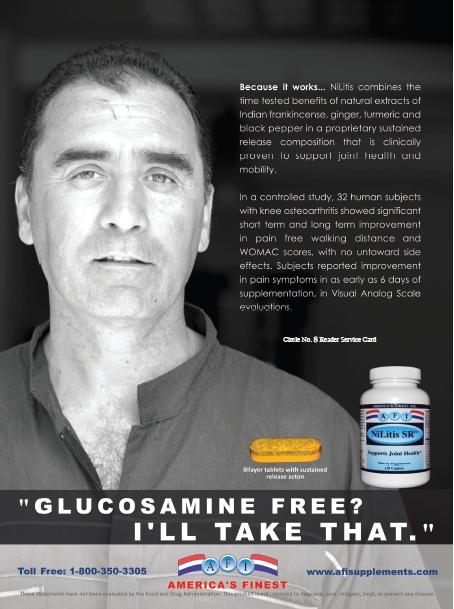
A branded supplement from Earth’s Bounty (Longevitrol) contains deer velvet antler extract and, according to Kravitz, it won’t harm the adrenal glands or cause a rush of adrenaline. He says that studies show it is effective in athletes for energy, stamina and endurance.
But Chapman believes other herbs are safe, too, pending a doctor’s approval. “Going with an adaptogen-based energy supplement would not be cause for concern for most people,” he says.
The Jolt: Pros and Cons
We’ve covered several supplements to support sustained energy. But, shoppers may also be looking for a quick pick-me-up, and there are lots of tempting options out there from Red Bull to double-espressos.
These kinds of short-term stimulant have both friends and foes in the natural products industry. Clouatre says it’s key to understand that caffeine in large doses can “lead to feeling jittery and jagged, and that there is a steep drop-off in energy at some point even though there may remain a strong distortion in sleep patterns later in the day.”
There may even be somewhat of a placebo effect regarding caffeine. “One study analyzed the effects of various carbohydrate-electrolyte fluids on cycling performance and revealed that performance increases related to a solution that included caffeine was, in fact, influenced by ‘rate of perceived exertion (6),’ Burks states.
“There’s nothing bad about caffeine once in a while,” says Kravitz. “But like anything, whether you’re getting caffeine as pure caffeine added to a formula, from coffee or from a natural source like guarana, it has side effects.”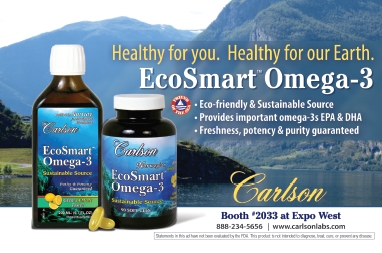
Maru believes there are ways to use caffeine responsibly—especially for those who know they are fast metabolizers of caffeine. “Not all caffeine is created equal in my opinion,” he says. Tell shoppers to avoid the synthetic caffeine found in several energy drinks and instead, choose products made with “all-natural caffeine derived from natural tea leaves, which seems to provide a more balanced energy without the typical mid-day crash.”
Levin speaks of other natural sources of caffeine (such as yerba mate, green tea and guarana), which “can have a role in supporting energy levels and burning calories when used responsibly.” They should not be excessively relied upon for energy production, however, he says.
In agreement is Brazier, who states, “Green tea and yerba mate contain a natural strain of caffeine that unlike the caffeine in coffee, will not cause jitters or hasten adrenal burnout at the same rate. Green tea and yerba mate are also rich in trace mineral and antioxidants.” Still, he advises that users will want to keep their adrenal systems well nourished post-consumption for sustained en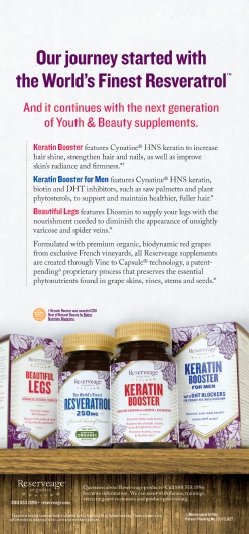 ergy.
ergy.
Others feel a better option is large amounts of B-vitamins—taken with some care. While they are energizing, says Clouatre, “overt stimulation still is stimulation and should not be resorted to frequently. Because certain purified amino acids, such as tyrosine and aspartic acid, can influence the production and release of neurotransmitters, a number of formulators try to create quick-energy supplements by combining these with B-vitamins.”
Many experts agree, however, that getting a quick boost isn’t a problem from time to time. Mihalik even notes that some studies suggest certain positive effects for caffeine, depending on the source.
But overuse is not healthy. Levin explains that high-caffeine products and other stimulants have side effects that “diminish their value as everyday energy choices.”
Caffeine stimulates the central nervous system, heart and muscles, and can raise blood pressure. Caffeine can also lead to increased urination, which can deplete valuable nutrients in some cases. Adds Chapman, “These ingredients push the nervous system with bursts of stimulation to go beyond its limits. Constantly using stimulants can lead to adrenal exhaustion, high blood pressure and other health issues.”
Clouatre also weighs in, noting that many healthy individuals can handle up to 400 mg/day of caffeine, but high levels of caffeine can lead to a mild physiologic dependence and also withdrawal symptoms (like headaches) without it. Plus, stimulants typically don’t “supply the variety of natural substances needed for internal energy independence,” Levin feels.
There’s also been some very risky behavior among party-goers: mixing highly caffeinated energy drinks with alcohol. Retailers should advise anyone considering such a concoction to forget about it. Says Burks, “Among college students, intercollegiate athletes have been identified as being particularly at-risk for excessive alcohol consumption and resultant health and behavioral consequences…the combined use of alcohol and energy drinks lead to a significant overall increase in reported risk-taking (7).”
M eletis equates using quick-energy stimulants as “taking from Paul to pay Peter. Or put another way, deficit spending. Nothing is free in the world or the body.” What he means is that a stimulant essentially taps into the body’s reserves of nutrients associated with energy production, leaving little for tomorrow; he calls this “adrenal burnout” and notes that the adrenal glands (sources of adrenaline and cortisol) need to recharge. Otherwise, the exhaustion cycle often repeats until one makes lifestyle and/or dietary changes.
eletis equates using quick-energy stimulants as “taking from Paul to pay Peter. Or put another way, deficit spending. Nothing is free in the world or the body.” What he means is that a stimulant essentially taps into the body’s reserves of nutrients associated with energy production, leaving little for tomorrow; he calls this “adrenal burnout” and notes that the adrenal glands (sources of adrenaline and cortisol) need to recharge. Otherwise, the exhaustion cycle often repeats until one makes lifestyle and/or dietary changes.
For all these reasons, Burks suggests, “Sustained-energy supplements should only be used for a maximum of two weeks at a time, with two days off before starting supplementation again. In fact, more ideal would be to take a natural energy supplement for up to five days with two days off. Energy supplements are not meant to be used constantly, but rather provide a temporary assistance to endurance and energy. Quick-energy supplements should be used only occasionally, while caffeine or harsh stimulants have no place in a healthy lifestyle.”
Energy for Athletes
Some of your biggest clients in the energy category may be those looking for a boost during their workouts.
Retailers should be prepared for some first-time shoppers that may need help getting oriented to natural offerings. According to Clouatre, bodybuilders tend to prefer very high-caffeine products and stimulants before a workout. You can tell them that this practice isn’t great for strength and muscle building. He explains why: “Caffeine stimulates cortisol secretion; this elevated cortisol response is moderated in habitual users, but not abolished (8)…Although under some conditions caffeine ing estion led to somewhat higher resistance to exercise fatigue, higher cortisol-to-testosterone ratios are negatively correlated with muscle anabolism.”
estion led to somewhat higher resistance to exercise fatigue, higher cortisol-to-testosterone ratios are negatively correlated with muscle anabolism.”
All around. One supplement was flagged by Kevin Owen, Ph.D., Nafta, head of technical marketing and scientific affairs for Lonza, Allendale, NJ, for its role in simultaneously addressing performance, fatigue and recovery. He states, “Research has shown supplementation with Carnipure l-carnitine increased the peak treadmill running speed in marathon runners and increased VO2 max in cyclists and long-distance walkers.”
VO2 max stands for “maximal oxygen uptake” and is said to show an athlete’s endurance and heart health since it measures the maximum amount of oxygen used during intense exercise. Owen adds, “Positive effects on VO2 max are good news because it is one of the most important measures of a person’s ability to perform high-intensity exercise for longer than four to five minutes.”
Before and after workouts. Advise shoppers to be choosey about what they supplement with just before and after exercising. According to Levin, “Before and during exercise, you don’t want to be digesting complex substances.”
For snacks, adds Brazier, the most important factor for pre-exercise is digestibility. “If food eaten shortly before a training session requires a large amount of energy to digest, you will have less energy leftover for your workout,” he explains. “Average people exercising 40 minutes a day can benefit from easily digestible, natural snacks before a workout, giving them all the energy produced to use during their workout.”
This is exactly why Burks feels some energy bars, smoothies, shakes and snacks have limitations: “[They] may provide quick energy, but they also are heavily processed and take longer for the body to digest.”
So, Levin says if you’re taking protein, do so well before or right after a workout. Those taking amino acids should take them before exercising, “so they are circulating during the activity.”
 Also a possibility for the before and after exercise list is creatine, according to Clouatre. He states, “ This is particularly likely to be beneficial if the creatine source is consumed with insulin mimetics, such as Russian tarragon (9) and bitter melon extract.”
Also a possibility for the before and after exercise list is creatine, according to Clouatre. He states, “ This is particularly likely to be beneficial if the creatine source is consumed with insulin mimetics, such as Russian tarragon (9) and bitter melon extract.”
Another option for before or after workouts are supplements with PeptoPro, a mixture of water-soluble peptides that can quickly enter the bloodstream and get to muscle tissue. “Specialty predigested protein derivatives can support both endurance and recovery as well as being supportive whether taken before or after workouts,” Clouatre states.
Lynn states that a branded supplement offered from her company (Sun Eleuthero) is great for using before exercise and for recovery, too. She adds, “Many run marathons and feel that Sun Eleuthero significantly assists with the body’s ability to recover from strenuous physical activity.”
Kravitz discusses an interesting stamina and endurance option: stabilized, bioavailable oxygen. “The first thing you learn as an athlete is to listen to your coach. The second thing is how to breathe,” he says. “When you have additional oxygen, you’re not going to be as fatigued.” The average person, Kravitz notes, will feel refreshed after taking such a supplement. “It’s like a ‘breath of fresh air,’” he states. “It’s not a stimulant and won’t increase your heart rate or blood pressure.”
When used before a high-intensity workout, a branded l-carnitine ingredient (Carnipure) was found to reduce muscle pain and decrease muscle damage. “Therefore, Carnipure L-carnitine supplementation can help in the recovery process,” says Owen. “The protective effects might be partly due to  enhancement of oxygen supply to the muscle via increased blood flow.”
enhancement of oxygen supply to the muscle via increased blood flow.”
Owen adds that exercise fatigue is caused by lactic acid accumulation and muscle glycogen depletion. “Research indicates that Carnipure l-carnitine supplementation decreases lactic acid accumulation and spares glycogen and therefore plays a role in delaying fatigue, as described by various research groups,” he says.
Also speaking of recovery is Brazier, who notes that it “hinges on reducing inflammation, clearing built-up toxins (like lactic acid) from your muscles and circulating oxygen to help your muscles and joints recuperate from the stress of working out.” To help, he suggests that one gets enough “easily digestible, alkaline-forming protein to aid with muscle repair and improve sleep to fully recover and ready yourself for another workout.”
Brazier adds some additional tips for post-workout routines. Since a lot of electrolytes may be lost during workouts, it’s a good idea to supplement after one is done exercising. “Sweat consists of water and electrolytes, both of which need to be replaced during exercise and help maintain smooth muscle contractions and energy levels,” he states.
When one exercises for more than two hours at a time, he or she should consume easily digestible nutrients every 25 minutes. Brazier adds, “Combining glucose- and fructose-rich foods (such as a Vega Sport Endurance bar or gel) makes for quick energy and endurance-boosting fuel.”
Last, there are some supplements well-known for supporting endurance. Chia and cordyceps help on this front.
Variety Is the Spice of Life
Carrying various delivery forms of energy-support products in your store is important. A lot of options are out there—energy drinks, gels, capsules, bars—for a good reason: shoppers have diverse needs and preferences.
These needs include, says Jones, “Convenience, functionality, the ingredients contained in the product and the amounts of those ingredients, ease of ingestion, flavors and the speed at which the product affects the user.”
Owen reports that his company has seen increased interest in shot and effervescent delivery forms. “These formats were developed due to portability and relative immediacy not often associated with sports drinks,” he explains. “For the many consumers who have difficulty swallowing pills, effervescent drinks can be a refreshing alternative, while helping ensure an effective dose is administered with each easy serving. Simultaneously, the shot format allows consumers to buy a single-dose product.”
Mihalik says retailers shouldn’t underestimate the value of convenience in this market segment, which he calls “the number one driver of choice followed by marketing and then cost.”
An example of convenience (with combined functionality) is the sublingual tablet. Supkoff speaks of a line from his firm (MicroLingual), saying sublinguals are “preferable because of the rapid and high absorption levels plus the ease of use. They require no refrigeration and can be taken under the tongue without water. They are easy to carry and quick to consume.”
 Maru confirms, however, there’s still a valuable place for the traditional pill form. “Many people like to workout first thing in the morning on an empty stomach to facilitate fat burning, so using a supplement versus a beverage or bar works best,” he states. WF
Maru confirms, however, there’s still a valuable place for the traditional pill form. “Many people like to workout first thing in the morning on an empty stomach to facilitate fat burning, so using a supplement versus a beverage or bar works best,” he states. WF
References
1. F. Shallenberger, Bursting with Energy (Basic Health Publications, Laguna Beach, CA, 2007).
2. University of Maryland Medical Center, “Vitamin B12 Benefits,” www.umm.edu/imagepages/19516.htm#ixzz1kUNtrtqU, accessed Jan. 25, 2011.
3. J. Teitelbaum, From Fatigued to Fantastic (Penguin Group, New York, NY, 2007).
4. M. Zimmerman and J. Kroner, 7-Syndrome Health (Nutrition Solution Publishing, Chico, CA, 2006).
5. D. Winston and S. Maimes, Adaptogens: Herbs for Strength, Stamina, and Stress Relief (Healing Arts Press, Rochester, VT, 2007).
6. M.S. Ganio et al., “Effect of Various Carbohydrate-Electrolyte Fluids on Cycling Performance and Maximal Voluntary Contraction,” Int. J. Sports Nutr. Exerc. Metab. 20 (2), 104–114 (2010).
7. C. Woolsey, “ Energy Drink Cocktails: A Dangerous Combination for Athletes and Beyond,” J. Alcohol & Drug Educ., 54 (3), 41–68 (2010)
8. W.R. Lovallo et al., “Caffeine Stimulation of Cortisol Secretion across the Waking Hours in Relation to Caffeine Intake Levels,” Psychosomat. Med. 67, 734–739 (2005).
9. I. Pischel et al., “Potential Application of Russian Tarragon (Artemisia dracunculus L.) in Health and Sports,” J. Int. Soc. Sports Nutr. 8 (Suppl. 1), 16 (2011).
Published in WholeFoods Magazine, March 2012










